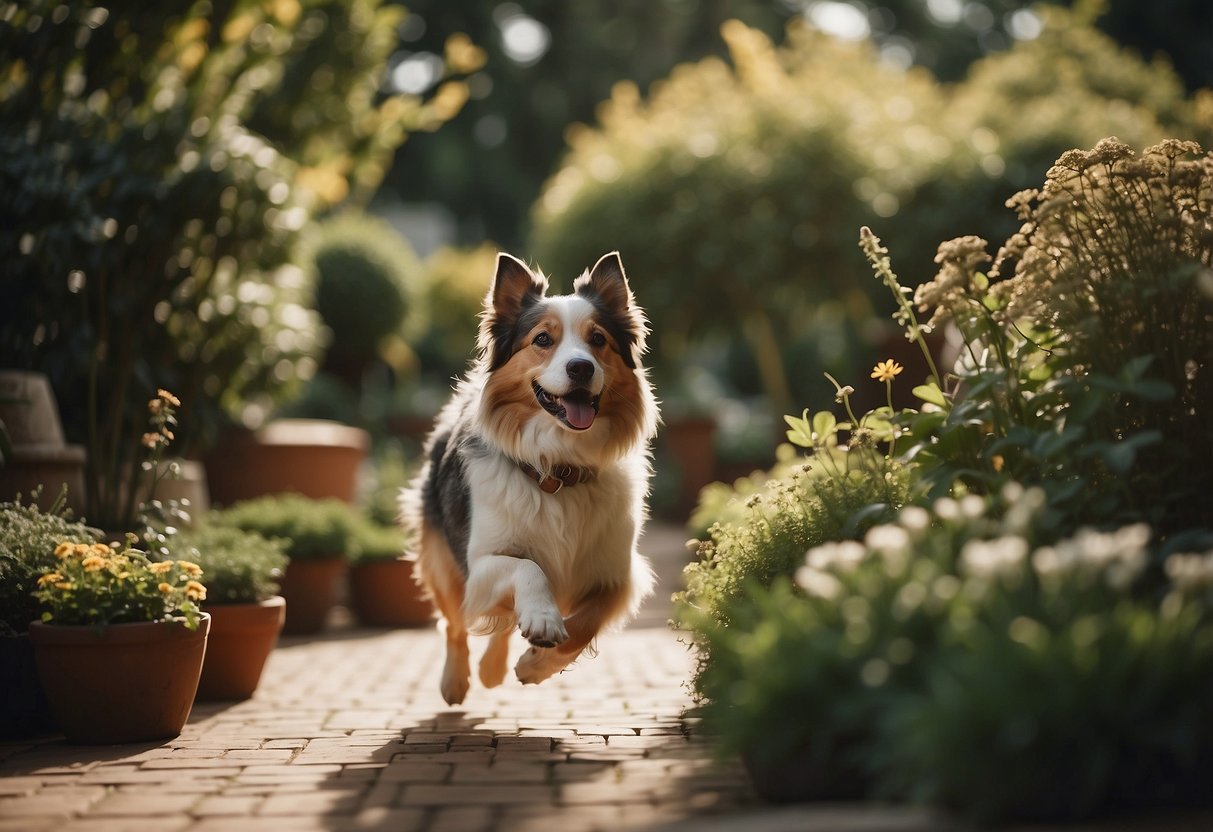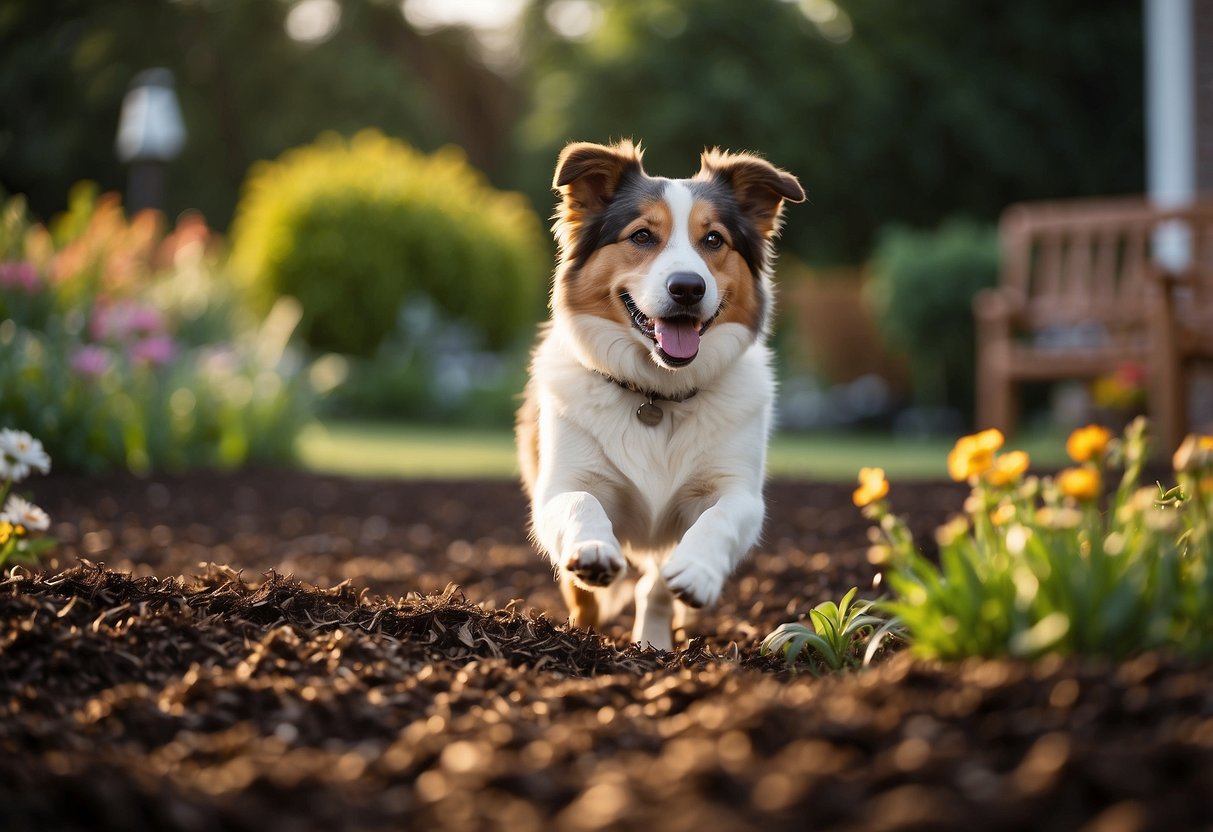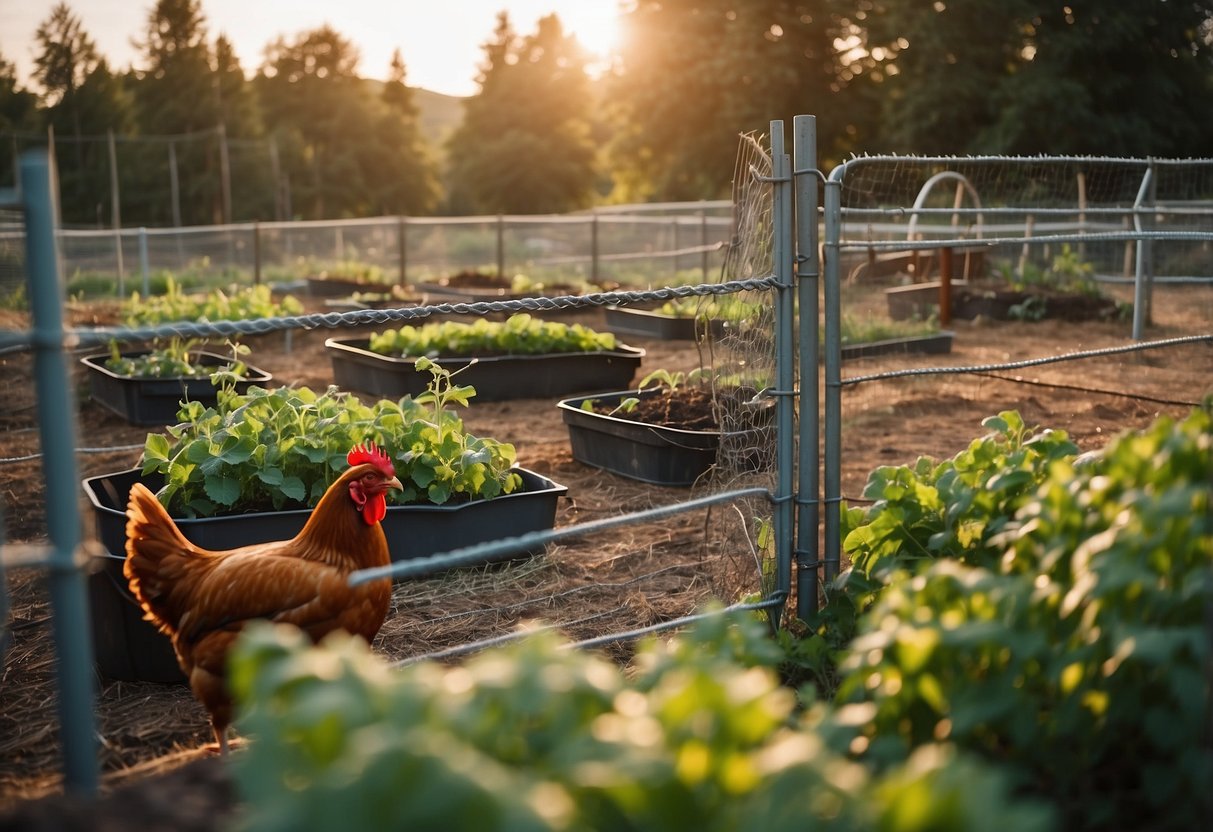Garden Ideas for Dogs: Creating a Pet-Friendly Outdoor Space
Creating a garden that accommodates both your love for plants and your dog’s playful nature can be a rewarding project. Whether you have a small backyard or a spacious plot, there are plenty of ways to design a dog-friendly garden that works for everyone.

The key to a successful dog-friendly garden is balancing your pet’s needs with the aesthetic appeal of your outdoor space. With thoughtful planning, you can create an environment that keeps your dog safe and happy, while still enjoying a beautiful garden.
1) Dog-Friendly Fencing Ideas

Wooden fences work well for small to medium-sized dogs. They provide privacy and a safe space for your pets.
Chain link fences are cost-effective and durable. They allow your dog to see outside and interact with the neighborhood.
Vinyl fences are an excellent choice. They are low-maintenance and offer great privacy for your dog’s play area.
For a DIY option, consider a thin wire fence. It’s simple to set up and provides a clear boundary for your dog.
2) Raised Garden Beds for Dogs

Raised garden beds can be good for your garden and your dog. They prevent your dog from trampling your plants.
Using tall, sturdy containers like large pots or horse troughs can help keep your dog from digging.
Raised beds can also add a decorative touch to your garden, blending style with functionality.
3) Pet-safe Plants and Flowers

Looking for dog-friendly plants? You’re in luck! Many blooms are both beautiful and safe for your furry friend.
Rosemary is a great choice. It’s hardy and safe for dogs. Plus, it smells amazing!
Gerbera daisies add a pop of color and are non-toxic to pets. They brighten your garden without any worries.
Not to forget pansies. They are safe for dogs and come in a rainbow of colors.
4) DIY Dog Play Area

Creating a DIY dog play area in your backyard can be a fun and rewarding project. You can start by building agility jumps with PVC pipes and connectors.
Adding shaded structures like canopies or pergolas helps keep your dog cool on hot days. Fresh water should always be available, with some ice cubes for added fun.
Incorporate a variety of obstacles such as tunnels made from old blankets or plastic piping to keep your dog entertained and active.
5) Edible Plants for Dogs

You can make your garden dog-friendly by including certain edible plants. Bamboo is a great option because it’s safe and dogs enjoy munching on its sweet shoots. Bamboo is nutritious and low in calories.
Another choice is snapdragons. These flowering plants are safe for dogs and add beauty to your garden. They love full sun and are easy to grow.
Lastly, consider growing cucumbers. Dogs often love chomping on fresh cucumber chunks, especially on hot days. They are a refreshing and hydrating treat for your furry friends.
6) Dog Pathways Through the Garden

Dogs love to patrol their territory. Creating designated paths for dogs can make your garden dog-friendly. Use existing routes that your pets have already made.
A 3-foot-wide path is usually enough for most dogs. This way, your furry friend can roam and patrol without ruining your plants. Incorporate materials like mulch or small stones to make the path comfortable for their paws. Adding borders can help keep them on track.
7) Pet-Friendly Water Features

A water feature can make your garden a fun and refreshing place for your dog. Choose a shallow water feature to avoid any safety risks. Moving water can keep the water fresh and inviting.
Make sure the design includes steps or a gentle slope so your dog can easily get in and out. You can also consider adding a small fountain or a bubbling rock for some extra fun.
Including a water feature that is designed for pets ensures your dog stays cool and hydrated while enjoying the garden. Check out more ideas for pet-safe water features on this dog-friendly landscaping tips page.
8) Dog-Safe Mulch Alternatives

When choosing mulch for your garden, it’s important to consider options that are safe for your dog.
Pine bark and cypress mulch are excellent choices. They are natural and generally safe for dogs.
Cedar mulch is another safe option. It helps control soil moisture and keeps weeds down.
Pine straw is also a great choice. It’s soft for dogs to walk on and adds a nice aesthetic to your garden.
Avoid cocoa bean mulch, as it’s toxic to dogs if ingested.
9) Shade Solutions for Dogs

Keeping your dog cool in the garden is important. You can use dog tents, which are easy to make and put up. They use fabric and dowels, and you can find more details here.
Another good idea is adding a pet-safe water feature. Moving water can keep your dog cool, as suggested here.
For a quick fix, umbrellas and pop-up canopies work great too. They are simple to use and move around. These options can help you make sure your dog stays comfortable when it’s hot outside.
10) Dog-Proofing Your Vegetable Garden

Protect your vegetable garden from your dog with a secure fence. A sturdy fence can prevent your dog from trampling or eating your plants. Make sure the fence is tall enough to keep your dog out and firmly set in the ground.
Create a designated dig zone in your yard. This can help redirect your dog’s digging instincts away from your garden. Use sand or dirt to make this area attractive for digging.
Keep compost and mulch out of reach. Some compost materials can be harmful to dogs. Use a covered compost bin to keep your dog safe.
Designing a Dog-Friendly Garden

A dog-friendly garden combines safe and durable plants with spaces for your pet to play and explore. This section will cover key considerations to keep in mind when choosing plants and creating areas where your dog can safely enjoy the garden.
Choosing the Right Plants
Selecting the right plants is essential for creating a safe garden for your dog. Some plants can be toxic to dogs, so it’s important to avoid plants like azaleas, lilies, and sago palms. Instead, opt for pet-safe plants such as marigolds, sunflowers, and snapdragons.
Consider planting hardy ground covers such as clover or fescue, which can withstand heavy paw traffic. Lavender and rosemary not only add fragrance but are also safe for dogs.
Additionally, it’s wise to plant in raised beds or sturdy containers to keep curious paws out of your garden beds. This will also help protect your plants from digging and trampling. Remember, always double-check plant safety with reliable gardening resources.
Creating Safe Play Areas
Creating dedicated play areas ensures your dog has a space to run, dig, and have fun without damaging your garden. Artificial grass is a popular option because it requires little maintenance, looks good year-round, and is soft on pooches’ paws. Natural grass like Kentucky bluegrass can also be a good choice for play areas.
Consider incorporating features like a doggy splash pool for hot days or a shallow water feature that is safe and enjoyable. Make sure any water features are shallow to avoid accidents.
Adding elements like tunnels, agility equipment, and shaded resting spots can make the space more engaging. Use non-toxic materials for all garden structures to ensure your dog’s safety. Check out these ideas to make your garden both fun and safe.
Maintaining Your Dog-Friendly Garden

Taking care of a garden that suits both you and your dog requires some thoughtful planning and regular upkeep. The key is to ensure that your plants are safe for your dog and to manage your pet’s behavior to protect both them and the garden.
Pet-Safe Plant Care Tips
Choose plants that are non-toxic to dogs. Marigolds, snapdragons, and sunflowers are good options. Regularly inspect your garden for any harmful plants that might have sprouted.
Maintain healthy soil by using organic fertilizers. Avoid synthetic chemicals which can be harmful to your dog if ingested. Compost is a great alternative that’s safe and eco-friendly.
Water your plants as needed but keep standing water sources covered or fenced. Dogs can get sick from stagnant water.
If you use mulch, opt for less harmful types like cedar or pine, which are less irritating to dogs compared to cocoa mulch.
Preventing Digging and Chewing
Designate a specific area for your dog to dig by creating a sandbox or filling a pit with playground sand. Encourage them to use this area by burying toys or treats.
Protect your plants by installing raised beds or using protective fencing around delicate plants. You can also use dog-friendly hedges to create borders.
Chewing can be discouraged by using natural deterrent sprays. Choose sprays that are non-toxic and safe for pets, such as bitter apple spray.
Spend time training your dog to avoid garden areas. Consistent reinforcement and positive training methods can make a big difference.
Provide plenty of toys to keep your dog busy and reduce their urge to chew on plants. Interactive toys and chewable bones work wonders for keeping your dog engaged.







